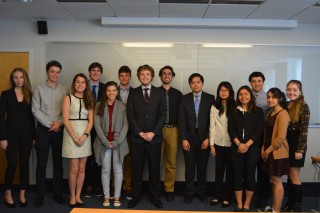News & Events
Student Central
ALERT & Gordon-CenSSIS Scholars Delivered Final Presentations May 30, 2017

May, 2017
This year, ALERT and Gordon-CenSSIS had the honor of hosting 15 freshmen engineering students as participants in the ALERT and Gordon-CenSSIS Scholars Program.
After two semesters of active involvement in the program — which includes participation in an ALERT or Gordon-CenSSIS research project, K-12 STEM outreach, and Scholar meetings, seminars and activities — they completed the program on Wednesday, April 12, 2017, when they presented their final research presentations to their faculty advisors and other members of the Scholars community. The final presentations consisted of a 2-minute “elevator speech” from each student, which provided an overview of their research project’s overall mission and activities, their specific contributions to the project, as well as a description of the knowledge and skills they gained.
The ALERT and Gordon-CenSSIS Scholars Program is designed to provide freshmen engineers with the opportunity to get involved in research and STEM outreach, but also focuses on building their professional development. Throughout the year, Scholars attended seminars on Public Speaking Skills, Research Ethics, Lab Safety and Research Poster Building Skills.
ASPIRE 2017: Bringing Students, Faculty, Industry, and Government Together March 31, 2017
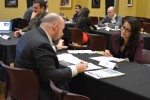
The Annual Student Pipeline Industry Roundtable Event (ASPIRE) was held on Thursday, March 16, 2017 at Northeastern University, Boston. Each year, ASPIRE, which is hosted by ALERT (Awareness and Localization of Explosives-Related Threats) and Gordon-CenSSIS (The Bernard M. Gordon Center for Subsurface Sensing and Imaging Systems), brings together members of the academic, industrial, and government communities to engage in dialogue, and provides networking opportunities for ALERT and Gordon-CenSSIS students looking for internships, co-op opportunities, and employment.
Participants at ASPIRE 2017 included industry representatives from American Science and Engineering/Rapiscan Systems, Analog Devices, Hamamatsu Photonics, HXI, and Morpho Detection; government representatives from the Department of Homeland Security, U.S. Coast Guard, U.S. Customs and Border Protection, and the Transportation Security Laboratory (TSL); and ALERT-affiliated graduate students from Boston University, Duke University, Northeastern University, Purdue University, Texas Tech University, and University of Puerto Rico Mayagüez.
The event started off in the early afternoon with welcoming remarks from Dr. Carey Rappaport (ALERT Deputy Director, ALERT Research Thrust Leader for R3 Bulk Sensors and Sensor Systems, and Electrical and Computer Engineering professor at Northeastern University), followed by industry and government introductions delivered by Emel Bulat (ALERT Senior Consultant for Corporate and Government Partnerships). Afterward, industry and government members gave 8-minute presentations on their organizations, research needs, and job openings. In the late afternoon, Dr. Hanumant Singh (Electrical and Computer Engineering, and Mechanical and Industrial Engineering professor at Northeastern University) delivered the keynote talk: “Autonomous Surface Vessels: High Resolution Mapping for Change Detection Spatially and Temporally.” This was followed by two separate roundtable networking sessions, in which representatives from industry and government met one-on-one with students, as well as with each other.
On the morning of the event, ALERT was pleased to welcome Brian Dolph of the U.S. Coast Guard and Chris Mocella of U.S. Customs and Border Protection to the laboratories of ALERT researchers, Dr. Octavia Camps, Dr. Jose-Martinez-Lorenzo, Dr. Carey Rappaport, and Dr. Matteo Rinaldi in order to showcase their research and its relevance to the Homeland Security Enterprise.
Check Out Our Latest ALERT 101 Video March 31, 2017
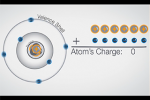
ALERT 101: The Basics – Atoms and Molecules
The prequel to ALERT 101 – Methods of Chemical Characterization and Mitigation, ALERT 101 – The Basics: Atoms and Molecules, provides an introduction to atoms and molecules. This video describes the structure of atoms, basic behaviors and properties of atoms, and how atoms bond to form molecules. Different methods of molecule identification are also discussed.
For users without YouTube access: ALERT 101 – The Basics: Atoms and Molecules
Inspired by the success of TED (www.ted.com) and other educational media forums, ALERT has developed the ALERT 101 video series. Each video short features different technologies and research areas that the ALERT Center engages in. We hope that these productions help educate and inform the global community on these topics in an accessible and enjoyable way
This material is based upon work supported by the U.S. Department of Homeland Security, Science and Technology Directorate, Office of University Programs, under Grant Award 2013-ST-061-ED0001. The views and conclusions contained in this video are those of the authors and should not be interpreted as necessarily representing the official policies, either expressed or implied, of the U.S. Department of Homeland Security.
Professor Jose Martinez-Lorenzo Awarded $500K NSF CAREER Award March 6, 2017

ALERT Thrust R3 Project Investigator, Professor Jose Martinez-Lorenzo of Northeastern University was recently awarded a $500K National Science Foundation (NSF) CAREER Award for his work on developing a method for “4D mm-Wave Compressive Sensing and Imaging at One Thousand Volumetric Frames per Second.” Millimeter-wave sensing and imaging systems are generally used for a wide range of applications, such as security monitoring to detect potential threats at the airport and biological imaging for wound diagnosis and healing. Because this is the first four-dimensional millimeter-wave imaging system that can operate in quick-changing scenarios, it will benefit society greatly.
One of the main applications of this system is finding security threats hidden under clothing, inside backpacks, or in public spaces, such as sports arenas. The system can scan multiple people within 26 cubic meters and produce 1000 3D image frames per second. This far surpasses existing millimeter-wave sensing and imaging systems.
Despite the efficiency of this system, there are still some challenges to overcome. This project will look to address these challenges and ideally, the results of this research will establish the scientific basis for the proposed new sensing and imaging systems, by enhancing the imaging performance, reliability, and efficiency while reducing the hardware complexity, overall cost, and energy consumption of the system.
Additionally, Professor Martinez-Lorenzo will develop an educational program that combines classroom learning with research training methods to help students understand the principles and limitations of wave-based imaging. This educational program will also collaborate with the Northeastern University Cooperative Education and Career Development Program to transition students into industry and the Northeastern University Center for STEM Education to provide valuable research experiences for K-12, undergraduate, and underrepresented students, as well as education through online materials and public venues.
ALERT’s Methods to Improve the Detection of Hidden Explosives Wins Patent March 3, 2017
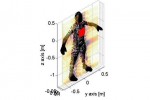
ALERT researchers, Prof. Carey Rappaport and Prof. Jose Martinez-Lorenzo of Northeastern University were awarded a patent for “Signal Processing Methods and Systems for Explosives Detection and Identification Using Electromagnetic Radiation” (U.S. Patent 9,575,045) on February 21, 2017.
This patent is for an algorithm designed to rule out non-explosive concealed foreign objects affixed to the skin (i.e. hidden under clothing). Current security screening systems, such as AIT Millimeter Wave Scanners used at airports to scan passengers, are able to identify items with distinct shapes that are hidden on the body, such as guns and knives. However, explosives are considerably more difficult to identify in this manner, due to the fact that the size and shape of explosives can vary greatly, leading to time-consuming and potentially dangerous security pat-downs to determine if a suspicious object is a security threat, or a wallet that a passenger forgot to place in the bin.
Prof. Rappaport and Prof. Martinez-Lorenzo believe their algorithm, when plugged into existing screening systems, will greatly reduce the number of false alarms, and thus, the number of pat-downs needed, leading to greater accuracy in threat detection and shorter security lines. The improved reliability would benefit many: passengers, airlines, and the Transportation Security Administration; and possibly lead to the expansion of AIT Millimeter Wave Scanners into everyday use, such as railway stations, sporting venues, and other soft targets.
Image caption: Simulation of a human form with explosives slab affixed to chest.
ALERT and Gordon-CenSSIS Scholars Participate in Presentation Skills Seminar February 10, 2017
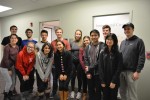
On February 1st 2017, the ALERT and Gordon-CenSSIS Scholars participated in a Presentation Skills Seminar. The ALERT and Gordon-CenSSIS Scholars Program is designed to provide freshman engineering students with opportunities to participate in research projects, STEM outreach, and professional development training. At the seminar, the Scholars discussed introductory presentation skills, with a particular focus on PowerPoint. This seminar is one of many regular meetings the Scholars will attend to improve upon their general leadership and research skills.
2016-2017 Kurlat Scholarship Awarded January 27, 2017
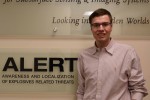
ALERT student, Anthony Bisulco of Northeastern University is the 2016-2017 recipient of The Saul and Gitta Kurlat Undergraduate Engineering Scholarship. This is the second year in a row that Anthony was selected for this award based on his academic excellence and strong dedication to the research he engages in with ALERT researcher, Dr. Jose Martinez. Anthony is a 3rd year undergraduate pursuing the BS in Electrical and Computer Engineering. In addition to conducting ALERT research, Anthony also serves on the ALERT Student Leadership Council.
Established in 2004, this scholarship is made possible through the generous donation of Saul Kurlat (M.S. Engineering Management, Northeastern University, Class of 1962) and his wife, Gitta Kurlat. Their endowment for a renewable scholarship award is used to support a deserving undergraduate engineering student who is actively involved in research with the Bernard M. Gordon Center for Subsurface Sensing and Imaging Systems (Gordon-CenSSIS) at Northeastern University.
Spring 2017 ASPIRE Announced January 27, 2017
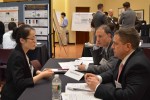
Every year ALERT and Gordon-CenSSIS host the Annual Student Pipeline Industry Roundtable Event (ASPIRE) aimed at building connections between students and ALERT industrial collaborators. The upcoming ASPIRE will be held on Thursday, March 16, 2017 at Northeastern University and will feature presentations by industry members, a poster session by students, and a “speed-dating” session for students and industry members to have one-on-one time to discuss their common goals.
The previous ASPIRE (held in Spring 2016) was attended by students from ALERT’s academic partner institutions, as well as representatives from the following ALERT industrial collaborators: American Science & Engineering, Analog Devices Inc., HXI LLC, Morpho Detection, Passport Systems Inc., Rapiscan Systems, and Raytheon Company; as well as representatives from two government agencies, the Transportation Security Laboratory (TSL) and the Department of Homeland Security (DHS).
ASPIRE continues to give students the opportunity to present their research and career aspirations to industry members looking to recruit for internships and full-time positions. ASPIRE also offers participants a unique format in which to cover a broad range of topics significant to the Homeland Security Enterprise, and provides students and industry members with meaningful and effective networking opportunities.
This event is by invitation only for our ALERT and Gordon-CenSSIS industry members and students. More details and an agenda are forthcoming.
Photo caption: Yongfang Cheng, Northeastern University PhD candidate meeting with Piero Landolfi and Kurt Bistany of Morpho Detection at the 2016 ASPIRE.
Year 4 Program Review Highlights ALERT Student Involvement January 27, 2017

The ALERT Year 4 Program Review was held on January 11th & 12th at Northeastern University in Boston, Massachusetts. The purpose of this review was to evaluate the ALERT research portfolio at both the theme and project levels, as well as the Center’s education program, transition efforts, and industrial partnerships. Several graduate students from ALERT’s academic partner institutions presented at this year’s review on behalf of the research projects in which they are currently involved.
University of Rhode Island PhD candidates, Austin Brown and Kevin Colizza presented on ALERT research related to the characterization and safe elimination of explosives materials, which they conducted under the guidance of Dr. Jimmie Oxley. Research in explosives characterization and elimination is especially important to those in the Homeland Security Enterprise tasked with the detection, identification, and destruction of homemade explosives (HMEs), such as bomb squads, and other first-responders.
Purdue University M.S. candidate, Nick Cummock presented on ALERT research led by Dr. Steven Son and related to small-scale characterization of homemade explosives (HMEs). The specific compositions of HMEs are nearly limitless, so making accurate assessments of threats from these materials is challenging. This research project seeks to develop a small-scale experimental approach that will result in quicker and more cost-effective characterization of HMEs, leading to greater accuracy in modeling and prediction of explosives related threats.
University of Puerto Rico Mayagüez M.S. candidate, Amanda Figueroa presented on her research project led by Dr. Samuel Hernandez. This research project deals with the use of infrared spectroscopy (IR) in standoff mode and coupled to laser sources operating in the mid-infrared (MIR) to develop confirming orthogonal chemical sensors for detecting explosives residues on clothing, travel bags, personal bags, laptop bags/cases, skin, and other substrates.
Xiao Wang, another Purdue University student and PhD candidate, presented on ALERT research conducted under the guidance of Dr. Charles Bouman and Dr. Ken Sauer related to advanced baggage screening and automatic target recognition (ATR), which is achieved via algorithms and devices primed to recognize objects based on data obtained from sensors. This research project seeks to improve the detection of potential threats in scanned baggage and reduce the false alarm rate without compromising safety at airport security checkpoints, resulting in a reduction of security costs and an overall safer and smoother experience for passengers.
Northeastern University PhD candidate, Mengran Gou presented on ALERT research led by Dr. Octavia Camps and Dr. Mario Sznaier and related to video-based methods to identify and track potential threats in heavily crowded public spaces. Video-based methods have an enormous potential for providing advance warning of terrorist activities and threats. In addition, they can assist and substantially enhance localized, complementary sensors that are more restricted in range, such as radar, infrared, and chemical detectors.
In addition to the outstanding ALERT student presentations that took place at the Year 4 Program Review, the Center introduced four new research projects taking place at Boston University, Duke University, Purdue University, and the University of Notre Dame.
Photo caption: ALERT Students (from left to right): Nicholas Cummock (Purdue University), Kevin Colizza (University of Rhode Island), Xiao Wang (Purdue University), Austin Brown (University of Rhode Island), Amanda Figueroa (University of Puerto Rico Mayagüez), and Mengran Gou (Northeastern University).
Job Opportunity at Analog Devices December 2, 2016
ALERT Industrial Member, Analog Devices is looking to fill an Electrical Design Engineer position.
Electrical Design Engineer (New Graduate) Job Reference Number: 161791
Job Description:
Seeking a highly motivated entry-level Electrical Design Engineer responsible for Digital/Analog Electronics, FPGA and Microprocessor design with emphasis on high-speed data conversion. Work closely with internal team members to design control systems pertaining to Microwave and Millimeter Wave development programs covering a range of commercial, military, and aerospace applications. Create and release engineering documents and provide technical support to sales and customers.
Principal Job responsibilities will include:
- Design of analog/digital circuits utilizing FPGA, Embedded Processors, high-speed data converters and DDR memory.
- Design DC Power conditioning, management, and sequencing circuits.
- FPGA coding utilizing VHDL/Verilog HDL implementing custom control interfaces, DSP algorithms, and memory interfaces. Test-bench generation, simulation, compilation and timing closure.
- Work closely with PCB designers to specify PCB design rules, component placement, and power plane distribution. Perform PCB signal integrity, crosstalk, and timing analysis.
- Analog/Digital circuit simulation.
- Hardware test, debug, and validation.
Qualifications:
- Recent Graduate, BSEE, MSEE preferred.
- Familiarity with FPGA/CPLD programming and design application, Verilog/VHDL
- Knowledge of Embedded processor code development preferred, C/C++
- Experience with Modelsim, DxDesigner, Xilinx ISE/Vivado, or Mentor CAD tools a plus.
- Candidate must have good communication skills.
- S. Citizenship Required.
For positions requiring access to technical data, Analog Devices, Inc. may have to obtain export licensing approval from the U.S. Department of Commerce – Bureau of Industry and Security and/or the U.S. Department of State – Directorate of Defense Trade Controls. As such, applicants for this position – except US Citizens, US Permanent Residents, and protected individuals as defined by 8 U.S.C. 1324b(a)(3) – may have to go through an export licensing review process.
Analog Devices, Inc. is an Equal Opportunity Employer Minorities/Females/Vet/Disability

